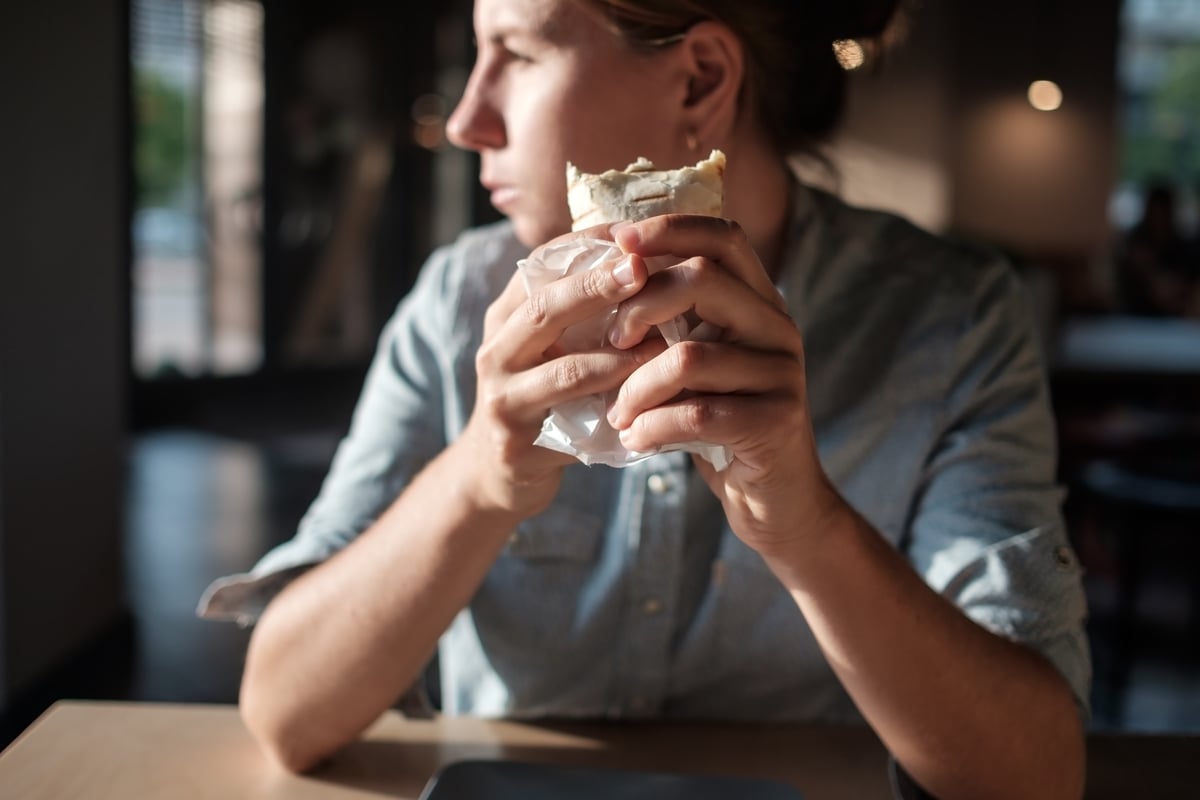With Chipotle's (CMG 0.01%) stock up over 80% year to date, the days of people getting sick from eating the fast-casual restaurant's burritos seem a distant memory. Customers have been coming back for new menu additions, to participate in the loyalty program, and to try its easy-to-use ordering app. Digital orders reached an all-time high this past quarter, fueling double-digit same-store growth.
Here's why digital is so important to Chipotle -- and how big it could get.
Customers (and Chipotle) love online ordering
Digital orders include those placed on Chipotle's mobile app, on its website, or through a third-party delivery service like DoorDash. Once entered, the order can be built on a more efficient second "make-line" that is separate from the in-store customer ordering experience. Catering orders can also be placed online, which is not only more efficient, it provides for clear expectations to the customer as to what they are getting.

Chipotle is betting its mobile app will fuel its growth. Image source: Getty Images.
This quarter, digital orders grew an astounding 88% from last year, reaching $257 million, a record 18.3% of total sales. These orders have a higher-than-average check and, because of the more efficient order assembly and pickup process, have better margins, too. The app-driven rewards program has grown to 7 million burrito-fan members since it was rolled out nationally in March. These loyal customers were a key reason the company posted 11% same-store sales growth last quarter, its highest in the last two and a half years.
This burrito maker's rewards program is less than a year old and is just starting to scratch the surface as to what is possible. Let's look at a top-rated quick-service restaurant that has been on the forefront of technology to get an idea of the runway ahead.
Starbucks is a role model
It shouldn't be a surprise to find out that Starbucks (NASDAQ:SBUX) has been rated as having the most loyal customers, but what may be surprising is the importance that digital plays into its success. This coffee giant started its mobile-pay service in 2009 and in its first year of availability racked up over 26 million transactions on its app. Fast-forward 10 years and active loyalty members top 17.2 million globally. Domestically, members drive an amazing 42% of transaction value in U.S. stores.
Starbucks recognizes that its customers love convenience and added mobile-order-and-pay in 2015, allowing customers to skip the line. Today, 12% of U.S. sales are ordered ahead on Starbucks' app and 37% are purchased through a drive-through, resulting in almost half of the sales coming without customers walking inside and ordering at the counter. All of this adds up to its active loyalty customers spending three times that of an average non-member.
Can Chipotle realize Starbucks-sized success?
It is just the beginning
Chipotle has had mobile ordering capability since 2009, but it has gotten serious about upping its game only in the last few years. In February 2017, the company announced faster pickup times (as short as 15 minutes if ordered from the mobile app) and started making the ordering and pickup process easier for its customers. Management has since upgraded "all relevant stores" with technology so burritos are assembled more efficiently and without disrupting the walk-in order line. Mobile orders can be retrieved from a pickup shelf without interacting with a cashier, and customers earn loyalty points automatically to qualify for free food.
But there's still lots of opportunity. CEO Brian Niccol said the company is only beginning to leverage the capability of the app for marketing purposes. The app and pickup process have improved, but customers still can't scan a receipt for loyalty credit or pay by scanning their loyalty bar code in the store. Some stores don't have enough digital volume to effectively utilize the second make-line tech. The company has installed "Chipotlanes," where order-ahead customers can pick up their food without getting out of the car, in 20 stores and are seeing positive results.
The opportunity ahead is huge
Done right, this strategy will increase revenue, bolster margins, and improve the customer experience. Even the board of directors has recognized the strategic importance of these efforts. It has authorized one-time performance bonuses for executives if they achieve its digital goals by the end of 2020. Although these goals were not shared, the team is laser-focused on driving orders online. When an analyst asked in the last earnings call if these transactions had plateaued, Niccol responded that "we're far from the ceiling on this."
Chipotle stepped up its digital endeavors in late 2016, when former CEO Steve Ells first introduced the second make-line technology to better support mobile ordering. At the time, he envisioned that electronic orders could make up as much as 50% of the sales in some stores. It was wishful thinking back then, but now it doesn't seem so far-fetched.







